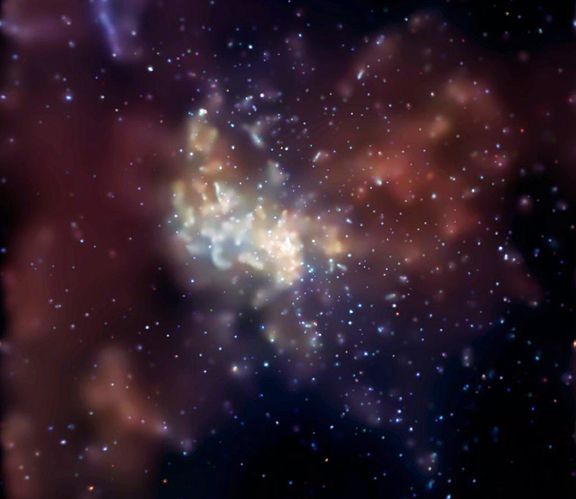
|
Explanation: Using the orbiting Chandra X-ray Observatory, astronomers have taken this long look at the core of our Milky Way galaxy, some 26,000 light-years away. The spectacular false-color view spans about 130 light-years. It reveals an energetic region rich in x-ray sources and high-lighted by the central source, Sagittarius A*, known to be a supermassive black hole with 3 million times the mass of the Sun. Given its tremendous mass, Sagittarius A* is amazingly faint in x-rays in comparison to central black holes observed in distant galaxies, even during its frequent x-ray flares. This suggests that this supermassive black hole has been starved by a lack of infalling material. In fact, the sharp Chandra image shows clouds of multi-million degree gas dozens of light-years across flanking (upper right and lower left) the central region -- evidence that violent events have cleared much material from the vicinity of the black hole.
|
January February March April May June July August September October November December |
| ||||||||||||||||||||||||||||||||||||||||||||||||
NASA Web Site Statements, Warnings, and Disclaimers
NASA Official: Jay Norris. Specific rights apply.
A service of: LHEA at NASA / GSFC
& Michigan Tech. U.
Based on Astronomy Picture
Of the Day
Publications with keywords: Milky Way - Galactic Center - Sgr A - black hole
Publications with words: Milky Way - Galactic Center - Sgr A - black hole
See also:
- APOD: 2025 July 1 Á Eye Sky a Dragon
- APOD: 2025 May 20 Á Milky Way over Maunakea
- APOD: 2025 May 13 Á Gaia Reconstructs a Top View of our Galaxy
- APOD: 2025 May 12 Á Gaia Reconstructs a Side View of our Galaxy
- APOD: 2025 May 9 Á IXPE Explores a Black Hole Jet
- APOD: 2025 May 6 Á The Doubly Warped World of Binary Black Holes
- APOD: 2025 May 4 Á Spin up of a Supermassive Black Hole
